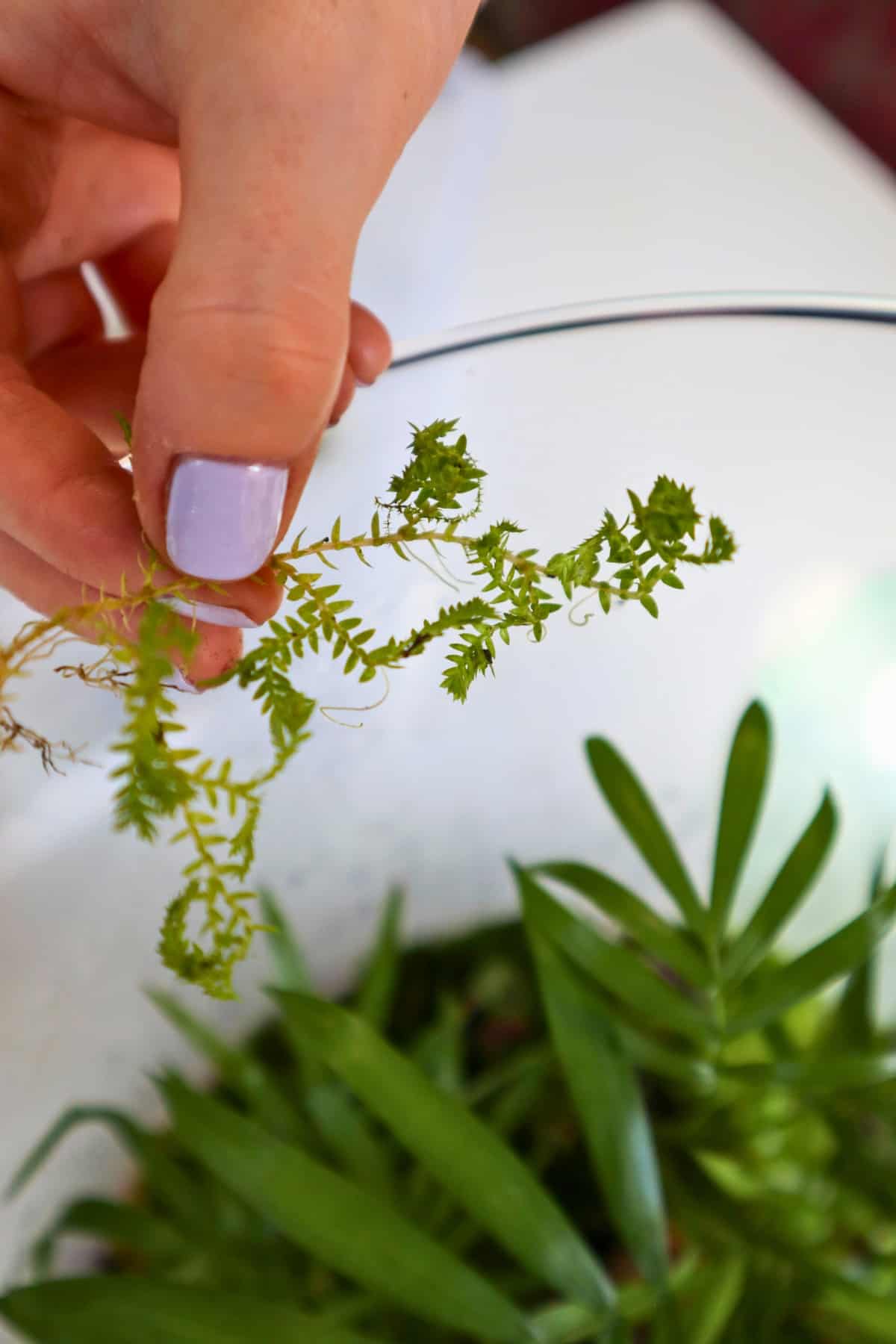Native to China, the Peacock Spikemoss is named for its stunning iridescent blue shades.
Its metallic turquoise colors and dainty shingling foliage really are a work of art.
Mother Nature has truly outdone herself!
This striking little plant is actually one of the “fern allies” (or lycophytes) because it has delicate fern-like foliage, but it’s often loosely classified as a moss due to its low growth habit.
Which explains why this plant has so many different common names… Is it a bird? Is it a plane? Is it a Peacock Fern, Spikemoss, Moss? Rainbow Moss?!
Who cares? Let’s circle back to point number one – it’s gorgeous.
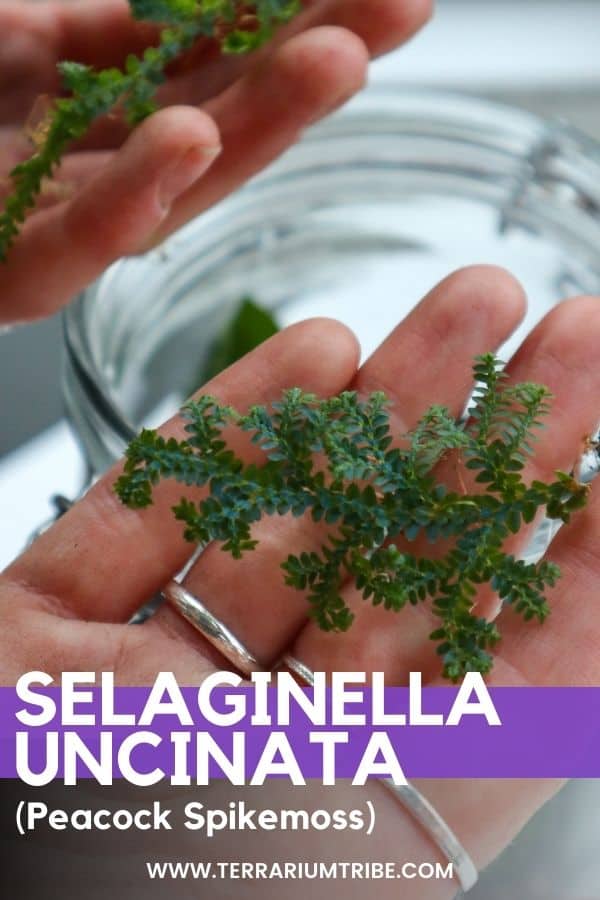
What is the Peacock Fern?
This ancient species of plant thrives in moist and humid environments, and it’s an easy choice for terrariums of all kinds.
Honestly, it’s such an effective trailing plant. It’ll quickly form a dense mat of feathery foliage that’ll cover the ground of your terrarium.
But, despite its chic high-maintenance look, Selaginella uncinata is actually an excellent starter plant. It comfortably tolerates lower light levels, is unlikely to be overwatered, and is an all-around tough cookie.
Making it not just a terrarium no-brainer but a great tropical indoor plant too.
Let’s dig in!
Where to Buy Selaginella uncinata
See the links below to purchase from reputable terrarium plant shops and marketplaces (may include affiliate links).
Selaginella uncinata Care & Growth
| Plant Type | Moss, fern (sort of) |
| Lighting | Low – high indirect light |
| Temperature | 55-80°F (12-26°C) |
| Watering | Regular, even moisture |
| Humidity | Medium – high humidity (50-90%) |
| Growth | 3-5 inches |
Lighting
Selaginella uncinata is a true low-light plant, and its brilliant blue hue stays vibrant under minimal light conditions.
It is definitely one to keep out of direct sunlight, though, as its delicate foliage will quickly scorch.
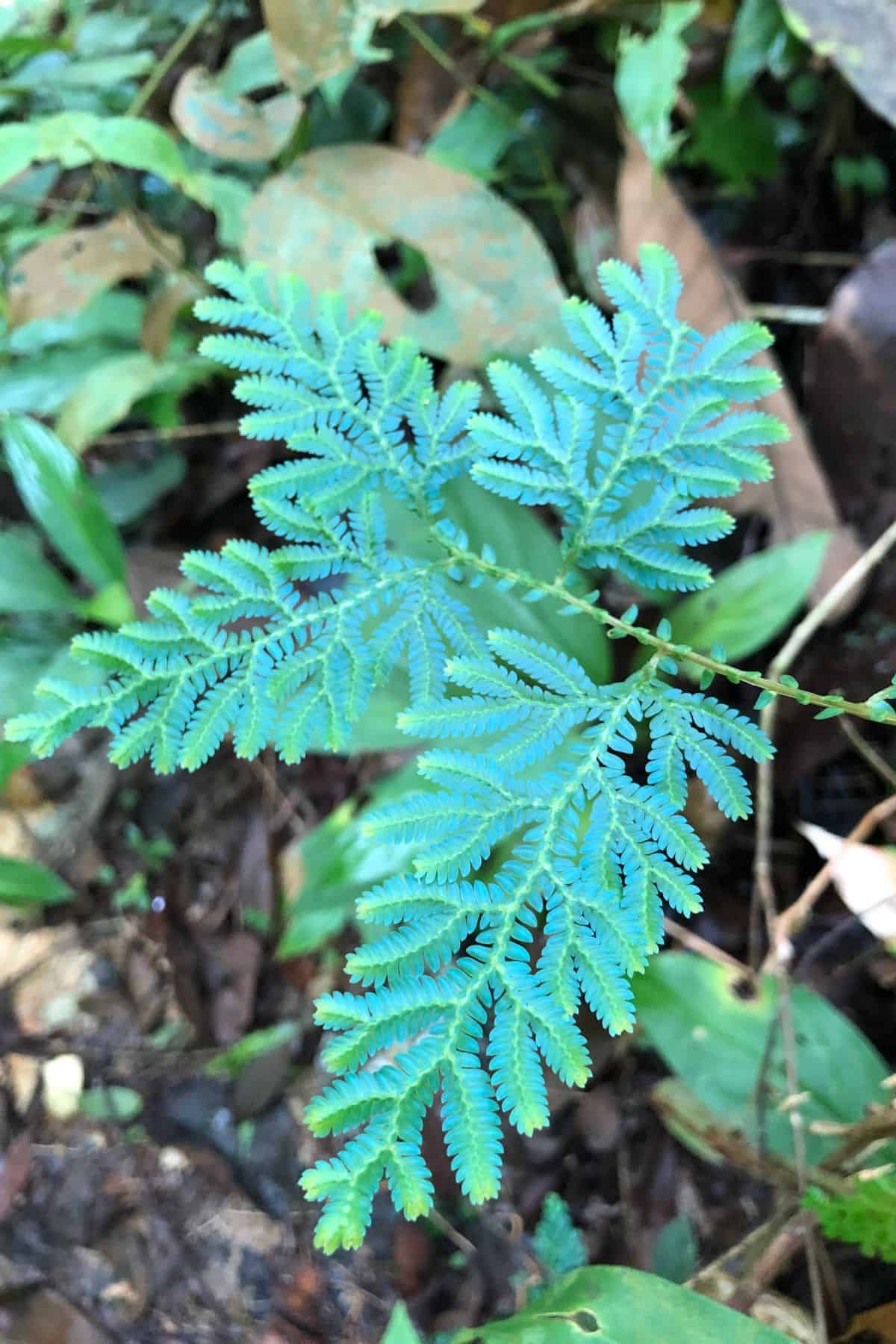
If you’re in the Northern hemisphere, a North-facing windowsill is the best bet; it will only ever receive indirect light there. However, if you live in the Southern hemisphere, then a South-facing window sill is perfect.
But remember, low light doesn’t mean no light, and if you can’t get it enough natural sunlight, then you’ll need to supplement.
It’s a fantastic candidate for some badass terrarium lighting.
Its unique frilled texture looks wonderful when highlighted with artificial lighting. And, the good thing is, you can’t overdo it, so expect lots of growth.
Watering
Living up to its “fern” namesake, this plant thrives in environments with consistent moisture.
In fact, it’s pretty hard to overwater. Over-involved plant parents rejoice!
When kept as a houseplant, S. uncinata likes to be thoroughly soaked.
Like ferns, this plant needs watering more frequently than most of my tropical houseplants, so make sure you test the soil with your finger every couple of days to see if it needs a drink.
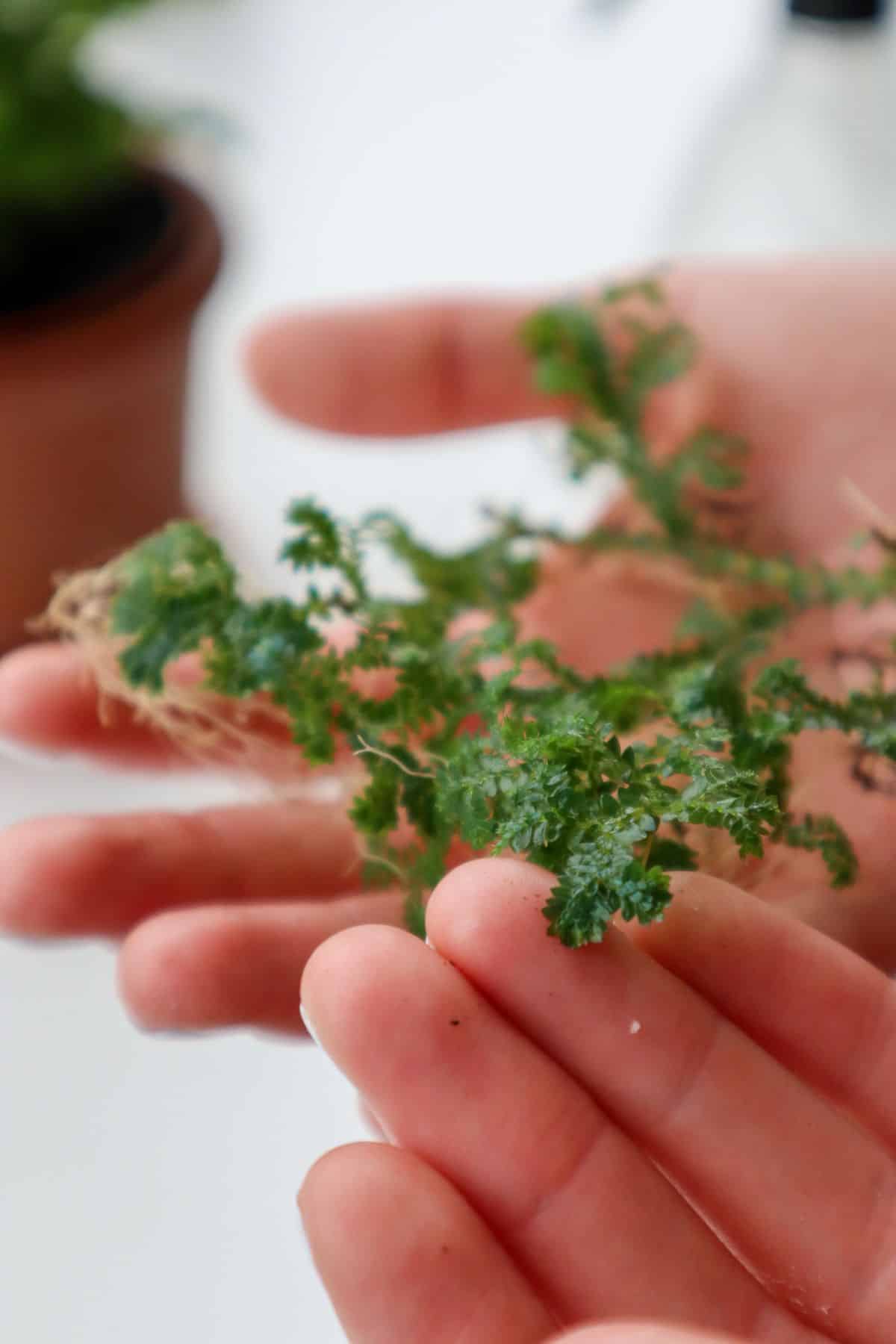
Despite being a thirsty plant, in a terrarium, it’s still better to be overly cautious. Remember, it’s much easier to add water than remove it.
Substrate
Thankfully, the Peacock Fern isn’t overly demanding when it comes to substrate choice.
The only real requirement is that you’ll really need a substrate mix with good water retention, as it has such shallow roots.
To achieve this, use a high-quality base (like coco coir) and choose substrate supplements that boost drainage and retain moisture. Orchid bark, charcoal, and pumice are great options here, and remember to add a natural fertilizer like earthworm castings, too.
👉 Our signature terrarium substrate mix has all of the above!
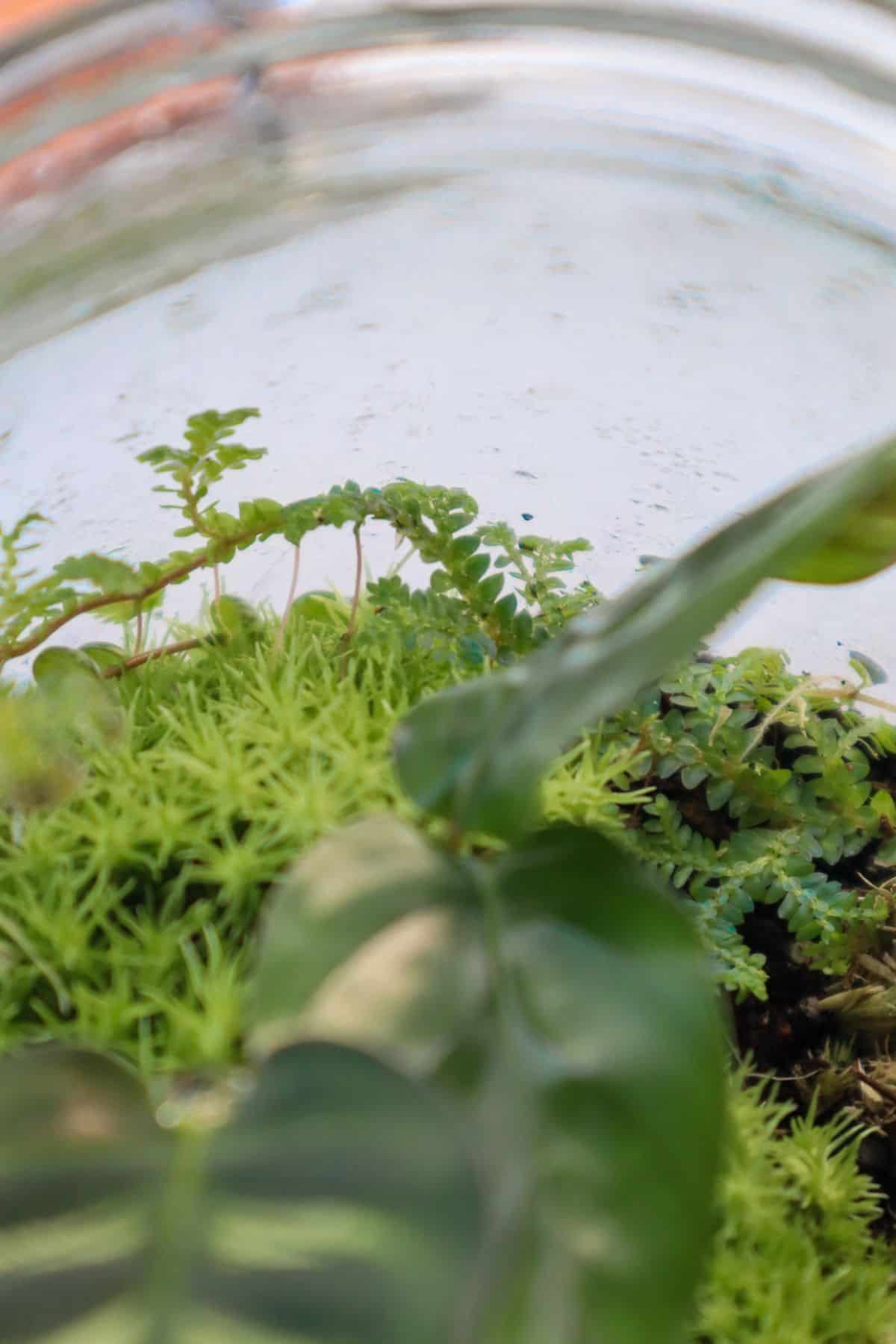
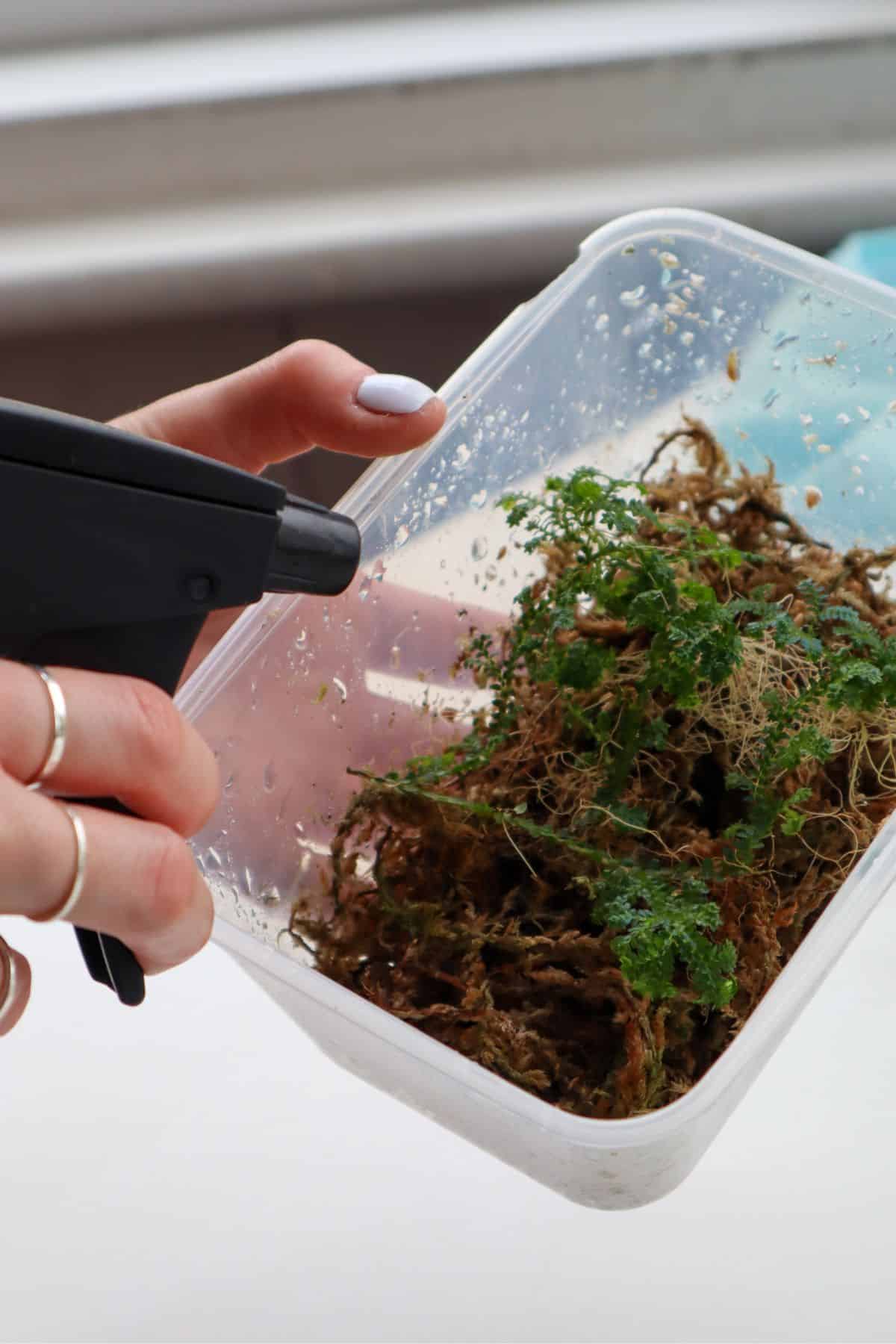
Temperature & Humidity
Honestly, in a terrarium environment, you’re unlikely to run into any problems with the Peacock Fern.
It is a versatile tropical plant, after all.
While it will appreciate as much warmth and humidity as you can give it, it’s actually surprisingly hardy and can tolerate a range of temperatures (so it’ll be comfortable in the home, too).
It would appreciate tropical highs of 80°F (26°C) and 90% humidity.

But, as long as you avoid temperatures lower than 55°F (12°C) and humidity levels lower than 50%, you’ll keep your Selaginella happy.
Growth
Peacock Spikemoss will generally only reach a few inches in height, but it can grow much wider.
It spreads like a river flowing across land (helped by its blue sheen, naturally), with beautiful shingled foliage unfurling across your pot or terrarium container.
Given enough time, you can expect it to cover the ground of most terrariums and, in a pot, begin spilling out of the sides – so it will likely need trimming semi-regularly.
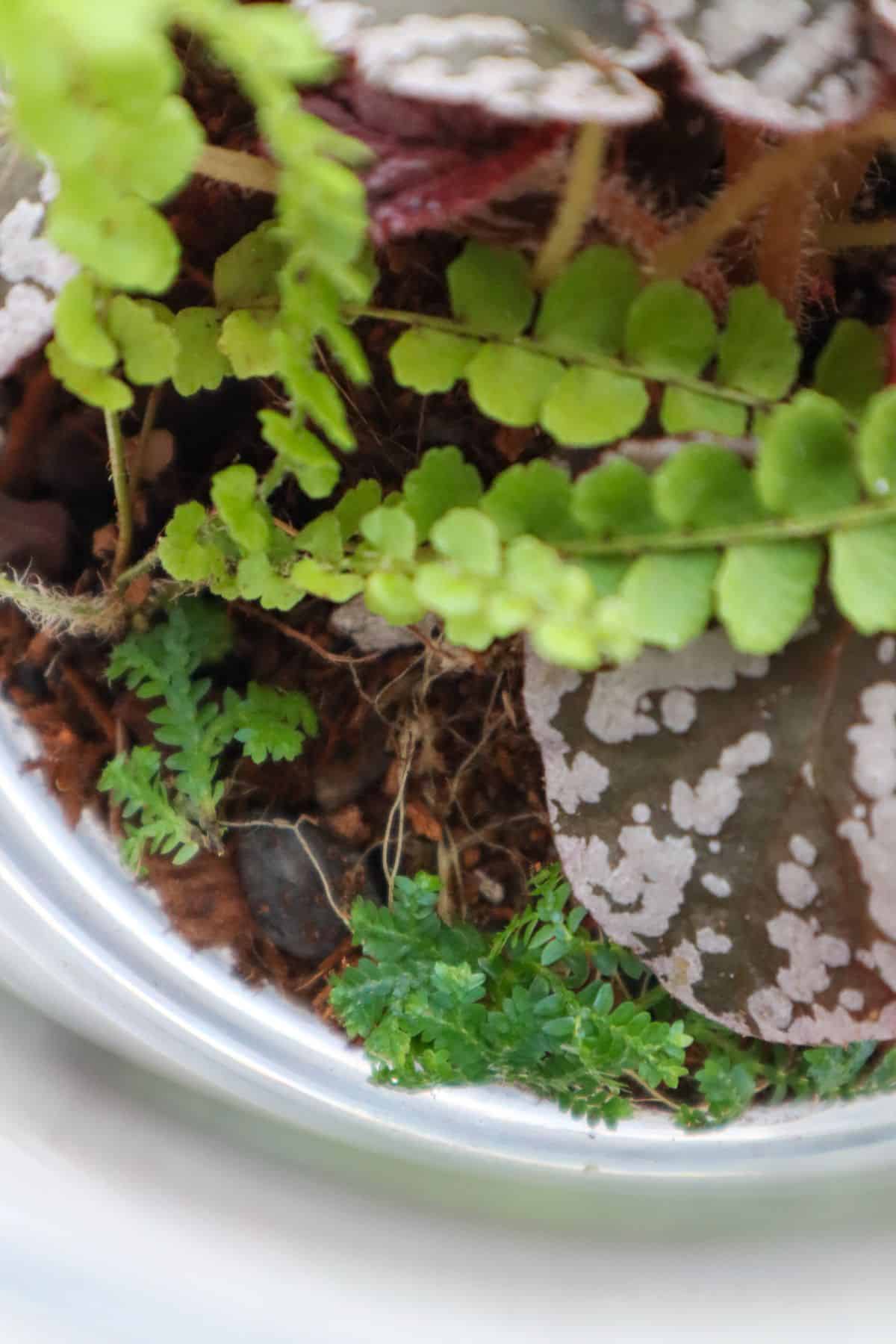
But more Selaginella is better, right? And more growth means more to propagate. Win-win.
Propagation
As with other Selaginella species, S. uncinata is easy to propagate through both stem cuttings and division.
In fact, they naturally root from their tips as part of their creeping growth habit, so cuttings of most descriptions are viable.
Good news for your friends and family and local plant swap group!
I find the most straightforward way is to snip off a decent-sized chunk and pop it in a Tupperware box on some moist sphagnum moss. Open it up every now and again for some airflow and to check if it needs a spray.
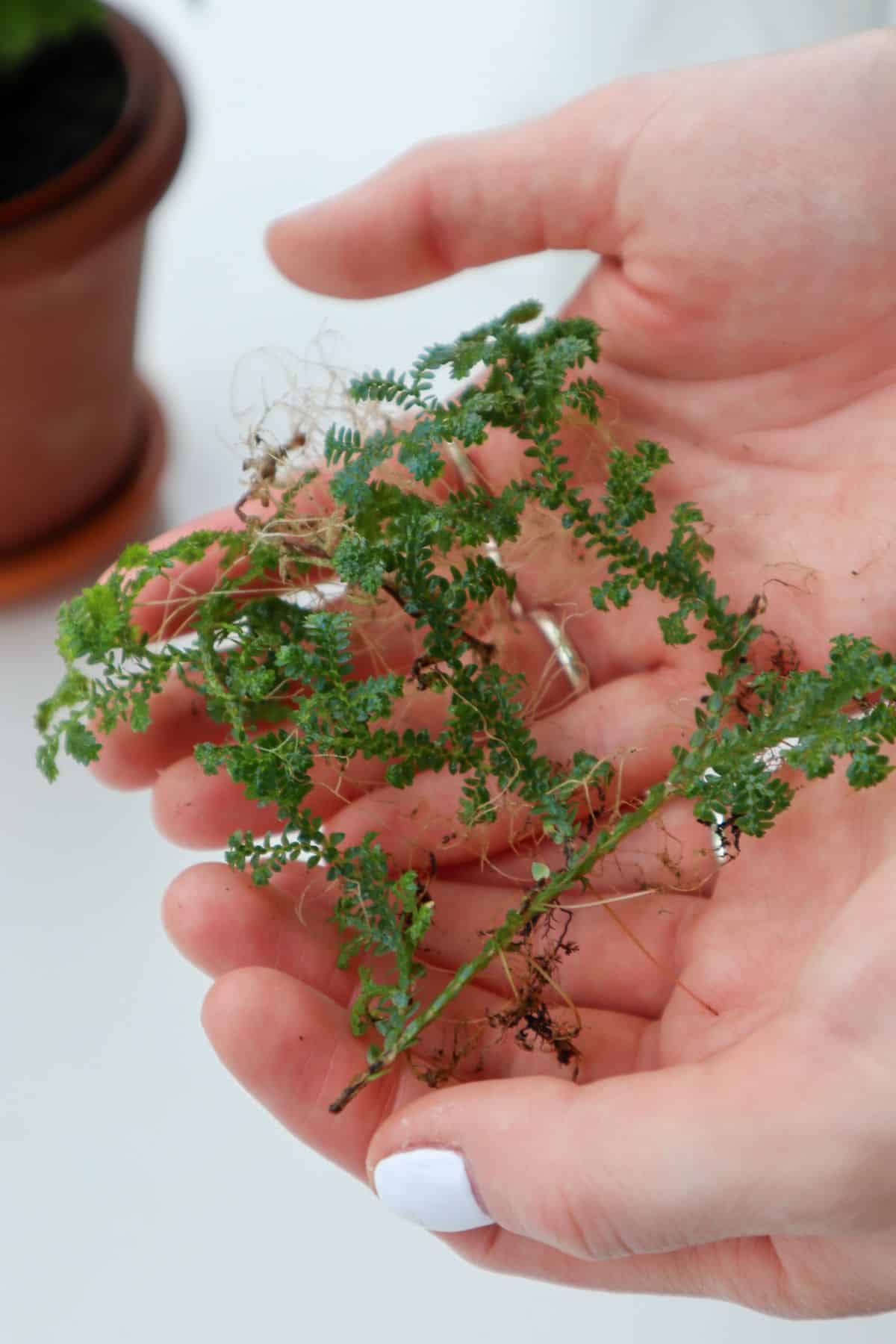
Varieties & Similar Plants
There’s a huge amount of variety in the Selaginella genus, but no other specific varieties of S. uncinata to speak of.
Also, as much as I’d love to find a range of beautiful iridescent Selaginella, I think this is the only one that’s available.
That being said, if like me you can’t resist a shiny blue plant, there are other notable iridescent terrarium plants such as the Blue Oil Fern (Microsorum thailandicum) and the Peacock Begonia (Begonia pavonina).
Or, for more Selaginella species of note, check out Selaginella kraussiana (Golden Clubmoss).
